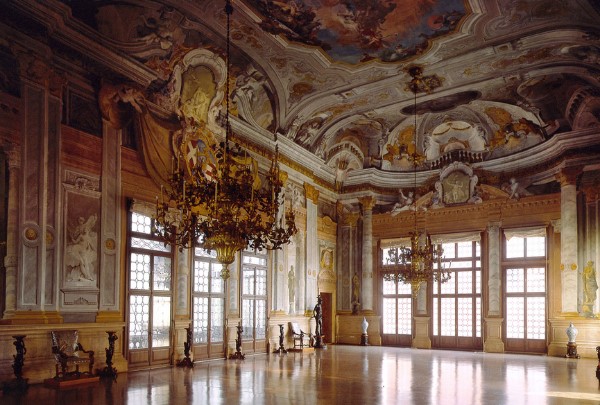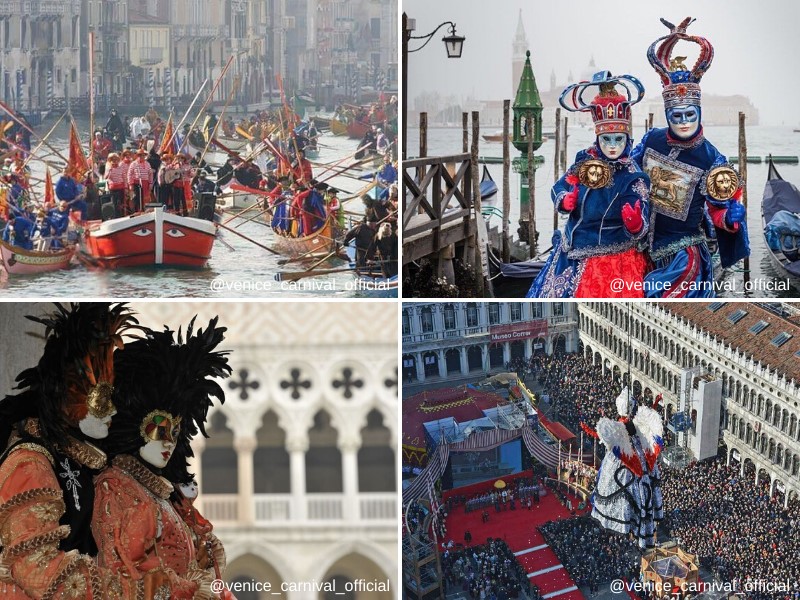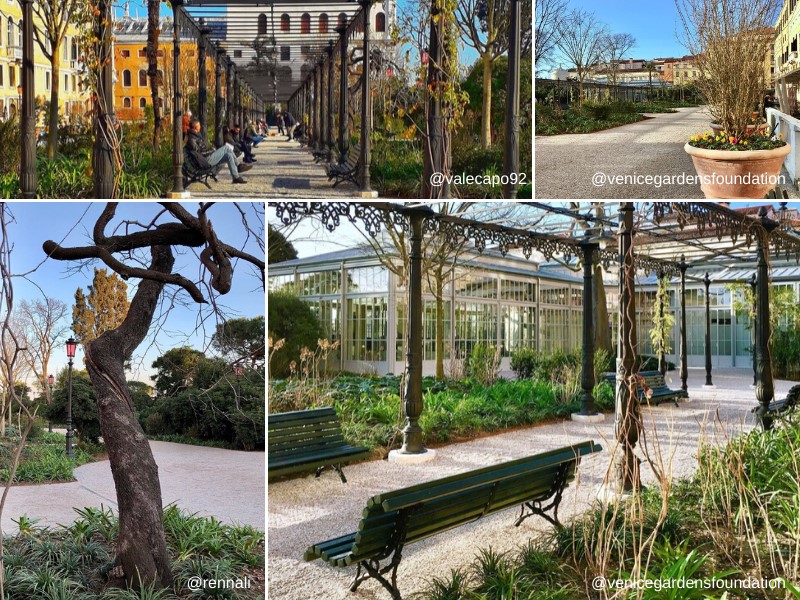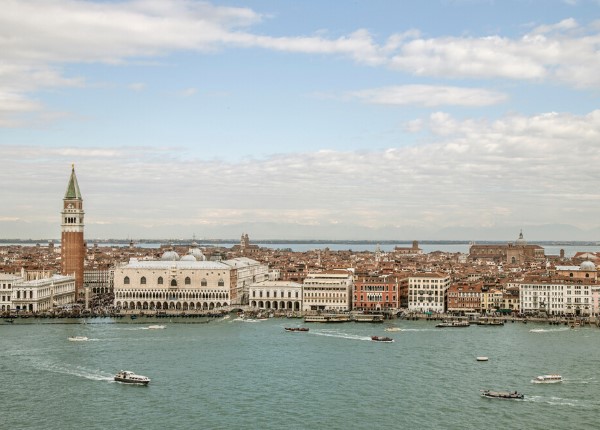In an atmosphere of ancient times, at our center you can find location for meetings concerning culture and hospitality inside an old monastery, restored and equipped with the latest technology. The Centre accommodates groups, individuals and families, and offers the opportunity to stay in a private and quiet place in the city centre of Venice, behind Gallerie dell’Accademia with direct overview on the Zattere quayside and on Giudecca Canal.
The entire building develops around three cloisters of 18th century and one cloister of 15th century near our Church of Santa Maria della Visitazione. Thanks to its vastness, its architecture, its gardens, its silence, our Center is an oasis inside the town: here even the rooms tell and create an atmosphere, by raising emotions.
OUR VIDEO...
Will let you discover all the magic atmospheres,
the incredible artistic heritage
of the Cultural Center Don Orione Artigianelli
and the magic in Venice.
What’s on in Venice

Carlo Goldoni, a famous playwright and writer from Venice, was born on 25 February 1707 at Ca' Centanni. It is a Gothic palace that has become one of the Civic Museums of Venice. Today, it is a house-museum where you can discover the life and works of this Venetian author. In the three internal rooms, visitors can relive the atmosphere of Venice in the Eighteenth century by diving into the main scenes of Goldoni’s theatre through the furniture, antiques and illustrations. One room is where the marionette theatre from the Grimani ai Servi family collection was rebuilt. It is the most famous Venetian marionette theatre of the Eighteenth century.
On Mardi Gras, February 25, all day long, Carlo Goldoni's birthday is celebrated with special guided tours of his birthplace. The visit and entrance to the museum are free, reservations are required.
What to do to experience the Carnival as it was in the eighteenth century, at the time of Goldoni, the golden age of the Venetian Carnival? First of all, wear the mask: the baùta, the most classic disguise, consisting of a cloak, a tricorn and a “larva”. The “larva” is a white beaky mask, which completely covers the face and alters the voice, without preventing those who wear it from eating or drinking. It was mostly used by men, while women preferred the morètta, a small oval mask made of black velvet. To make it stick to the face, a button had to be tightened between the teeth, so that it was impossible to speak.
Enjoy a coffee or a hot chocolate with frittelle and galani (sweet fritters) in one of the many historic cafés. In fact, the tradition of coffee was born in Venice, and it was then spread to the rest of Italy. The first coffee shop was opened in St Mark’s Square in 1683: in 1759 the city had 206 coffee shops.
From "DeTourism"

- Visit Venice museums Venice state museums – as well as all state-run museums and archaeological sites in Italy - open for free every first Sunday of the month. On April 5, June 21, October 11 and December 8, 2020, free admission to the Civic Museums of Venice for residents in the Municipalities of the Metropolitan City of Venice and in the Municipality of Mogliano Veneto.
- Discover the Veneto Pantheon The Institute of Science, Literature and Arts displays a collection of marble busts depicting significant figures of Venice history - the so called Veneto Pantheon - originally exhibited in the loggias of the Doge's Palace. The Institute is open for free with a guided tour for one Friday a month.
- See the ancient Casino Zane A wonderful little gem of Venetian architecture from the end of the seventeenth century, the Palazzetto Bru Zane, once a place dedicated to music and today a centre for French music of the nineteenth century, is open to the public every Thursday afternoon with free guided tours.
- Enjoy a concert in a church Wednesday 26 February 2020, at 9 pm, in the Church of Santa Maria del Carmelo (Carmini), the Concert for Ash Wednesday, organized by the Ugo and Olga Levi Foundation in collaboration with Chorus, La Fenice Theatre Foundation and Benedetto Marcello Music Conservatory. Free admission.
- Discover the Torcello Museum The Torcello Museum opens for free on Sunday 1 March 2020. It is an opportunity to explore the small peaceful island of Torcello, in the northern lagoon of Venice.

The 2020 edition of the Carnival of Venice takes place from February 8th until February 25th.
Game, Love and Folly is the theme of this year’s edition. One hundred and fifty events, 50 initiatives for kids, and many cultural events with the participation of over 300 artists. There are also some new events, such as the special night ball on February 14, Valentine’s Day.
Saturday, February 8 there will be the official opening of the Venice Carnival, on the Rio di Cannaregio. The Festa Veneziana will continue on Sunday February 9 with the Water Parade of Venetian Rowing Associations, a parade of decorated boats along the Canal Grande, and food and drink stalls with the venetian food specialities. The Carnival will end on Mardi Gras, Tuesday 25 February, with the Svolo del León, a tribute to the winged Lion of Saint Mark at St Mark's Square.
There are plenty of events scheduled for the 18 days of celebration, spreading from the Venice historic city centre out to the whole metropolitan area. Considered one of the most anticipated events of the Carnival, the Flight of the Angel, on Sunday 16 February, will be the official opening of the celebrations of St. Mark's Square.
Finally, you cannot miss the frìtole, the well-known Venetian sweet fritters symbol of the Carnival along with the galàni (also known as chiacchiere, frappe, bugie, crostoli or cenci in other areas of Italy).
From "DeTourism"
The Royal Gardens in Venice, located just off St Mark’s Square, were created under Napoleonic and Austrian rule in the early 19th century. Empress Elizabeth of Austria – Sissi – is said to have loved the Gardens very much.
After an extensive restoration, promoted and curated by the non-profit Venice Gardens Foundation, the Royal Gardens reopened to the public in December 2019.
The 5000-sq metres gardens, surrounded by canals and the Basin of St. Mark, are overlooked by the Correr Museum, the imperial chambers of the Royal Palace, the Archaeological Museum and the Marciana Library.
The Royal Gardens provide Venetians and visitors alike a place of peaceful respite, with shaded benches. You can have a coffee or a cocktail in the Coffee House Pavilion, and admire the greenhouse and the restored wooden drawbridge, which on special occasion will link the gardens directly with St Mark’s Square. This spring, visit the gardens in bloom!
The Royal Gardens of Venice are a National Heritage Site, and given their important historic and environmental value, they are protected by Legislative Decree 42/2004. Visitors are reminded that they must respect the site and maintain suitable decorum.
Access to the Gardens can be limited when there is an overly high number of visitors. Entry to the Gardens of groups of more than 10 people requires prior booking via the internet site. To better plan your trip, find out the Royal Gardens opening hours.
From "DeTourism"
- Venice Lagoon, 550 square kilometres wide is Italy’s biggest wetland area.
- Venice’s oldest church: San Giacomo di Rialto – known by the Venetians as San Giacometo – founded on March 25th 421 A.C. which, according to tradition, is the birth date of Venice.
- One of Europe biggest State shipyards: the Arsenale, founded around the year 1104, to which Dante Alighieri dedicated four triplets of the Divine Commedy canto XXI Hell.
- The world's oldest Lazzaretto (infirmary), founded in the year 1423.
- The first Italian Jewish Ghetto, set up in 1516.
- One of Europe’s oldest public museums: the Republic statue museum, inaugurated in 1596, today National Archaeological Museum.
- Venice’s oldest theatre still existing today: the Goldoni Theatre, inaugurated in 1622.
- World oldest casino, opened in 1638: Venice Casino.
- The theatre “risen two times from its ashes”: Teatro La Fenice, founded in 1792.
- The bell tower on July 14th 1902 and was re-built exactly as the original ten years later: the St Mark’s bell tower.
- Venice maritime defence: more than 100 military architectural buildings, built from the 15th to the 20th Century and located in the lagoon, in the littoral and in the mainland.
IN THE ART OF VENICE














